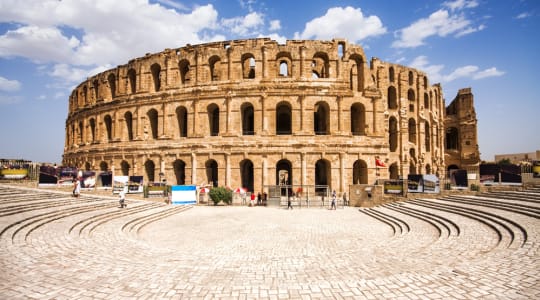The Amphitheatre of El Jem is a well-preserved Roman colosseum located in the small town of El Jem, in the governorate of Tataouine in Tunisia. It is considered one of the largest and best-preserved Roman amphitheaters in the world.
Built in the 3rd century AD, the amphitheater was used for gladiatorial games, animal hunts, and other spectacles. It had the capacity to seat over 35,000 people in its tiered seating arrangements. The amphitheater was built with local stone and has been well-preserved, with much of its original structure still intact.
In recent years, the Amphitheatre of El Jem has become a popular tourist destination, attracting visitors from around the world to admire its well-preserved architecture and learn about its rich history. The amphitheater has also been recognized as a UNESCO World Heritage Site, highlighting its significance as a cultural and historical landmark.
Visitors to the Amphitheatre of El Jem can take guided tours of the site and explore the underground passages, where animals and gladiators were held before entering the arena. There is also a museum on site showcasing artifacts and information about the amphitheater's history.
Explore Near Amphitheatre of El Jem
Discover 3 attractions, 5 cities, and 2 airports within 75km. Perfect for planning day trips, finding connecting flights, or discovering new destinations to explore during your visit.
Nearby Attractions & Places to Visit
3 destinations within 54.5km - 69.3km from your location



Nearby Cities Worth Exploring
5 destinations within 36.5km - 53.8km from your location
Airports Near Amphitheatre of El Jem
2 destinations within 51.5km - 64.3km from your location
Cross-Border Adventures Near Amphitheatre of El Jem
Discover cross-border adventures near Amphitheatre of El Jem. Explore neighboring countries with similar attractions and extend your travel experience across borders.



